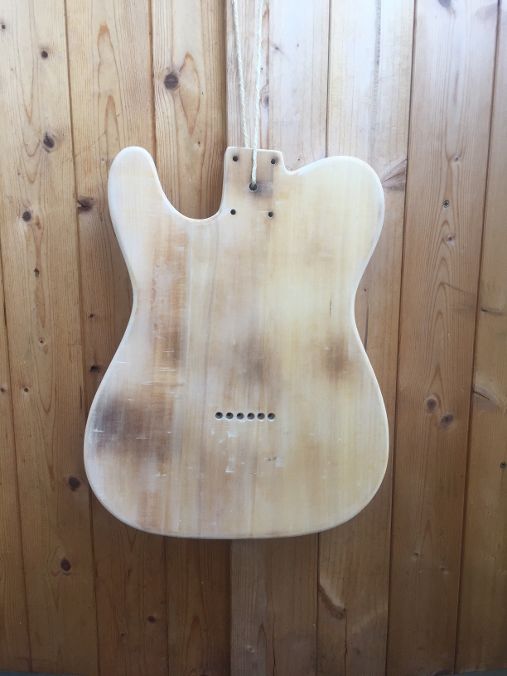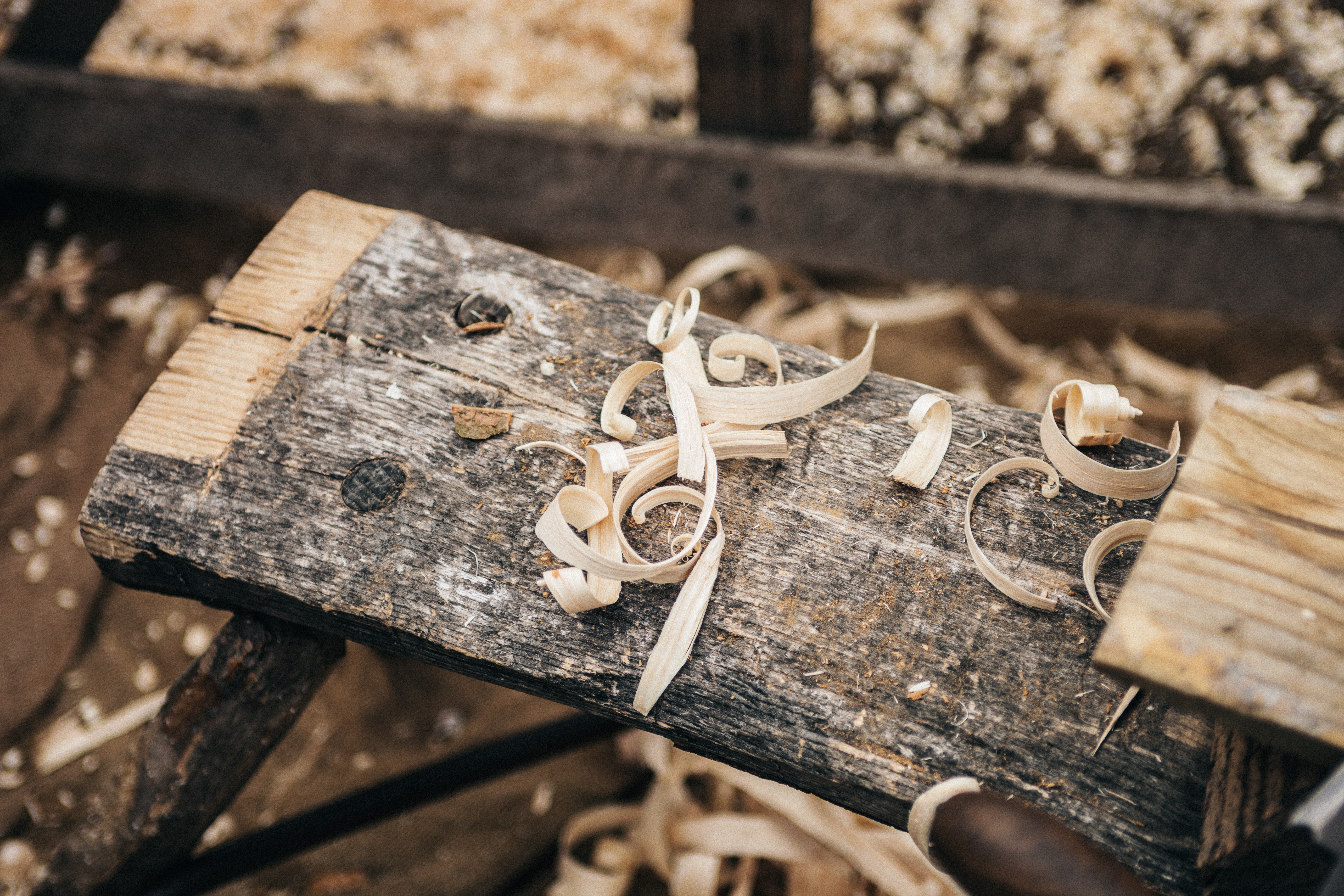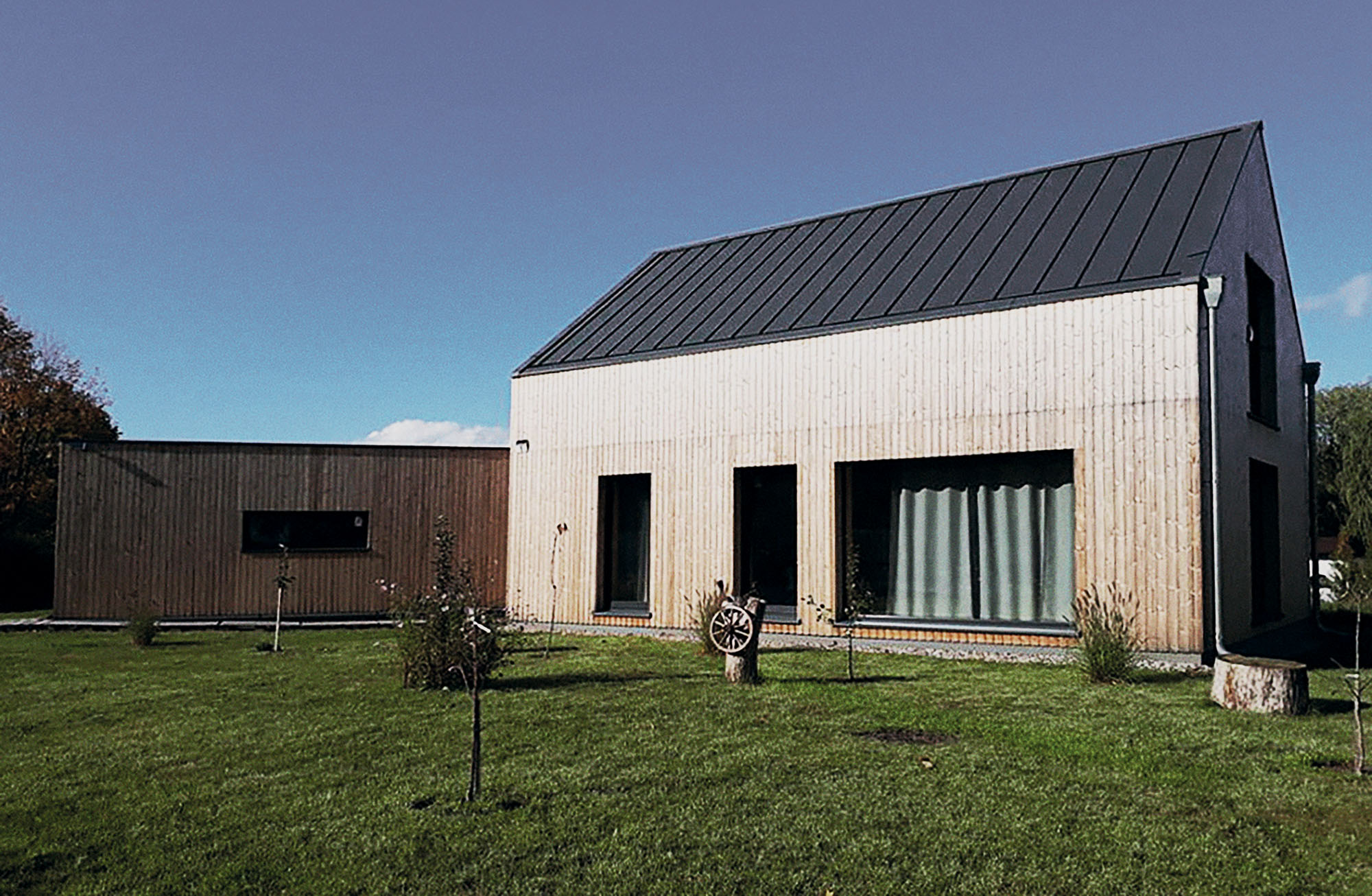
Today, the atavistic art of woodworking continues to capture the hearts and souls of hobbyists as well as professional joiners, carpenters and furniture makers the world over. What draws them to this centuries-old craft?
Humans have always been bound to wood. Woodworking is an activity that spans hundreds and thousands of years: from Neanderthal tools and Bronze Age wood carvings, to the ancient carpentry techniques and machinery of ancient Egypt, Rome and China. Modernity may have shaped and sanded the dimensions of woodworking considerably – bringing with it a power-tooled evolution – but an essential part of it still stays close to the grain.
Today, the atavistic art of woodworking continues to capture the hearts and souls of hobbyists as well as professional joiners, carpenters and furniture makers the world over. Like many other amateur upcycled furniture makers, I found myself drawn to its tactile artistry. What began as one simple project spawned a prolific fixation with making things out of wood: from upcycled tables to benches and bedside shelves. What surprised me was the extent to which I found woodworking to be more of an attitude than an activity. The velocity of life can sometimes be anathema to creativity, but working with wood provides a fruitful brake; a space to slow down to a meticulous pace, figuratively following the old carpenter’s adage to “measure twice and cut once”. Certainly, the lockdown summoned by the coronavirus slammed on that brake, splintering the stride of life and furnishing many with a suite of time. Yet at root, I think there are two key facets which make woodworking unique as a creative and practical enterprise. What I have termed the ‘saw/sand redemption’ speaks to this dual focus: namely, the positive mental impact on one’s wellbeing and the positive environmental impact of upcycling reclaimed wood.
Having worked as a joiner and carpenter for over 10 years, London-based Adam Carrier-Sippy is well-equipped to talk about the emotional whorls of the craft. “My experience of carpentry has been one I constantly refer to when I want to re-evaluate how I live my life,” he reveals. “The first time I realized I might be good at something that could be useful is the moment my whole being rejoiced. As harvested forests, the cycle of life is built into the medium of wood and that is why I believe it speaks so intimately with the soul. To study such a skill is simultaneously joyful, infuriating and humbling; much like life,” he continues.
“But the immediacy of what I can create with my hands never stops being a thing of satisfaction, and I can’t deny that the physical effort of creating it must have its positive effect on both my physical and mental wellbeing.”
Working with timber can, in various ways, be beneficial to one’s all-round health; as a physical activity, the exercise involved in the efforts of sawing and planing wood can also keep joints and muscles finely tuned. In turn, the composure required to successfully practice woodworking furnishes a serene concentration that can relieve stress and decrease blood pressure. But crafting in wood is as much a dexterity of the mind as it is of the body. It is cerebral in its application of mathematics and physics, its demands for immediate focus on the task at hand, and also in the way it inspires creativity. Thinking outside the box and successfully building the actuality of an idea also builds a genuine sense of achievement and self-confidence.
Indeed, for some, carpentry and joinery represent a far more serious therapeutic resource for maintaining wellbeing and alleviating the effects of mental health conditions. Together with encouragement and education, a local community offers a collaborative forum for sharing ideas and nurturing social cohesion. In the UK, so-called ‘men’s sheds’ offer a largely elderly, male membership the opportunity to counteract social isolation by communally pursuing practical hobbies, including woodworking. Other organizations, such as The Woodworks Project, Woodwork to Wellness and Woodwork for Wellbeing provide a range of vital services, bringing in those with mental health issues and vulnerable or disadvantaged people in the community.
Alex Brooke, co-founder of Woodwork for Wellbeing in East London, tells me that “woodwork, like many practical creative crafts, is great for our wellbeing. Our approach is to do it socially too, so that people of any skill level can chat and learn together while making things in a relaxed atmosphere. Learning, discussing, designing, planning, then constructing (including making mistakes) something physical is very rewarding. The whole process is beneficial and having a finished item to be proud of is the icing on the cake. We have found carving to be particularly successful as members can get lost in the process.”
Clearly, the fundamental desire to create is something inherently human. Despite all the advancements of building methods and techniques, something about wood’s primaeval organic vigour has an evergreen appeal to us as biophilic creatures. The wood we build with was once the live limb of a tree; perhaps something of that vibrancy is what makes it so enchanting and responsive to the touch. In fact, the natural matter of wood has been taken to the heart of ergonomic conversations around healthcare, wellbeing and interior design.

For Riina Muilu-Mäkelä – senior scientist at Luke, Natural Resources Institute Finland – wood has demonstrable restorative properties as a material. “In previous studies, wood material has been shown to affect the activity of the human autonomic nervous system and to relieve stress,” she says. “People have been shown to have more positive emotions in wooden rooms and the mere touching of wooden materials can have a calming effect.”
As she reinforces, wood has many desirable qualities as a building material, “such as good acoustic properties, wood releases and absorbs humidity, and it has antibacterial properties. The odour of wood is typically well accepted. Wood reflects warm wavelengths creating a pleasant atmosphere, which makes wood a health-effective material.”
Clearly, it is not just the carving, turning, joining or sawing of wood that has a positive effect, but the very wood itself.
In the discourse of architecture and wellbeing, then, there is a clear biophilia argument to be made in the application of wooden materials. But this focus on the substance of wood and its different natural benefits also calls to mind a concern with indoor air pollution and how green interior designs attempt to combat it. Being eco-friendly goes hand in hand with wellbeing. Indeed, what has yet to be mentioned specifically is the sustainable sourcing of wood, the ethics of upcycling, and the use of reclaimed timber – the saw/sand redemption itself.
Put simply, reclaimed wood is timber that has been salvaged from its original use and repurposed for new projects. It may have been an old scaffolding board, a decaying railway sleeper, or floorboards from a bygone time transformed into anything from coffee tables and cabinets to hardwood flooring. As I, too, have discovered, a bit of sawing and some vigorous sanding can redeem the age of weathered wood, prolonging the narrative scars and charm that makes upcycling so fascinating.
The advantages and possibilities of using reclaimed wood are manifold. But though the application of salvaged timber is far from a novel idea, it has found fresh favour with a rise in sustainable ventures, green building projects and recycled furnishings. Founded in 2015, Geyersbach is a Berlin-based upcycled furniture brand and the brainchild of its eponymous creator, Ulf Geyersbach. “We have to completely rethink the subject of ‘furniture’: regional, local, resource-saving,” he tells me. “The ‘ecological’ benefit is multiple. With local upcycling production like that of Geyersbach, there are practically no supply energy balances.”
With a decade of personal experience and a passion for the ecological and social advantages of using reclaimed wood, Geyersbach anecdotally makes his case: “When I went on a long vacation in Poland with my family three years ago, we were in Kashubia for two weeks and our canoe tour down the Wda ended in Czarna Woda. I had already perceived the surrounding forests as monoculture forests: poles, spruce, pine. Pure industrial forest for many, many kilometres around the city. Then I saw, and above all, I heard the huge timber and sawmill in Czarna Woda during the day and also at night. And I have to say: I was completely horrified,” he admits. “It looked to me like a huge car production city – Wolfsburg – in the middle of nature.
“The trunks were delivered from the surrounding area, stored in huge damp storage areas, and then processed into industrial wood panels that are delivered all over Europe.” Geyersbach adds. “There has been a great deal of environmental awareness in Germany in recent years, which has consequences for consumer consumption. Unfortunately, these topics are not yet known in the furniture industry,” he concedes. “Thanks to online sales and the coronavirus, IKEA will experience the best sales year in its history, but people have no inkling of the ecological and thus social consequences of their actions. In order to be able to meet the constantly growing demand for construction timber, we have to rely entirely on upcycling for furniture production,” Geyersbach continues.
One of the prime benefits of upcycled wood is its sustainability credentials. By using reclaimed materials, the demand for manufacturing virgin timber is decreased, which has the knock-on effect of reducing deforestation. If sourced responsibly, reclaimed wood can be entirely renewable, relieves landfills of waste, fights the climate emergency, and diminishes the pollution involved in sawmill operations.

Dovetailing with all of this and the wellbeing aspect, various types of saw/sand redemption produce a whole host of positive externalities in the microcosm of neighbourhoods and in global society. “A local upcycling production gives people something back directly: they can see, participate, develop their own furniture – an awareness of craftsmanship returns directly to the cities,” as Geyersbach eloquently puts it.
“People take courses, learn to use tools, they are not just consumers, they become producers by making their own things or commissioning and supervising the production locally. They develop an awareness of the value of wood waste and are encouraged to remodel and repair old furniture,” he adds. This conscious departure from ‘fast furniture’ represents not just a move towards sustainable manufacturing, but also one that recalls woodworking’s effect on wellbeing by fostering a sense of social community through open workshops, repair cafés, and other shared spaces.
Geyersbach, who also runs upcycling courses in Berlin, tells me that many of his participants “complain that they only work on the screen all day, that they literally long to create something with their own hands.” If the contemporary moment is one often pervaded by a moribund dissatisfaction, that is because we feel estranged and alienated by manic consumerism and an economy of accelerated pathologies. Rarely offered a break from the joyless immiserations rampant capitalism foments, our old link to nature has been severed, widening the gulf between ‘the manual’ and ‘the digital’.
But by building bridges with each other, the past, and the environment around us, the art of woodwork allows us to rekindle old forms of community and emotional comfort. Reclaiming old wood in the name of sustainability and in happy contravention of capitalist drives holds its own redemptive value. While people have always carved, turned, joined and framed, its continued popularity tells us that there is something still intrinsically fulfilling about it – evidently, something about recycling the ligneous lineage of wood is good for us.
Sustainable tips for starting your woodworking journey
- The world is alive with an abundance of woodworking charities. A few keywords in a search engine and some simple self-directed research will likely yield a number of nearby organizations only too happy for volunteers and participants. Reaching out to ecological communities around the world and establishing connections is vital to the success of upcycling.
- Finding online or local live opportunities – using resources such as Eventbrite – might also provide the supportive joist for a burgeoning interest in a sustainable approach to woodworking. A quick search, ‘woodworking’ for example, in your neighbourhood will show a range of scheduled events which could inspire the budding upcycler.
- Searching the internet to discover reclaimed furniture businesses in your local area is another way of supporting the industry and the planet; investing your money in ecological enterprises, rather than mass-produced furniture, is a crucial means of ensuring that an ecological upcycling revolution can continue to gather speed.
- While there are dealers who trade in reclaimed wood, the best way to be assured of its legitimacy and sustainable credentials is to salvage it yourself. I have found that a productive means of doing so is simply checking around your local community, building sites, house clearances, and online, for people throwing away unwanted timber or furniture.
- Reclaiming wood in this way is completely free, saves its previous owner time, cost and hassle, and prevents entirely serviceable wood from being needlessly discarded into landfill. Assuming tools and safety equipment are already acquired, it also means that the set-up costs for upcycling reclaimed wood are negligible.
- But never take what is not yours or ‘rescue’ without asking. It is important to be safe when sourcing reclaimed wood and be mindful of the fact that rusty nails, residual toxins, invasive insects or bacteria, and other hazardous remnants are removed. Ensure that the material you wish to use is dried and cleaned before upcycling with it.










